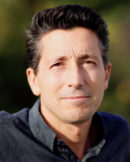Interview with Pr. Thierry Passeron, Deputy Director of the OncoAge federation, leader of the research axis “Dermato-Oncology” (melanomas and skin ageing), University hospital of Nice.

• What challenges has the emergence of the SARS-CoV 2 pandemic brought in terms of structural organisation and research in your activity ?
“The first wave of the pandemic had a huge impact in our activity has most of our consultations were cancelled and we only kept the most severe cases in our hospitalization unit. We had to adapt and make teleconsultations. Although such teleconsulations can be useful for the follow-up of systemic treatment and it is not satisfactory for new patients that required a diagnosis or for the follow-up of naevi. This abrupt decrease in our clinical consulting activity had a major impact in term of prevention (late diagnosis of melanomas for example) and the limited possibilities of hospitalizations was deleterious for many patients as we are the only dermatological department in the area. Now, we have adapted our organization and we can almost normally see patients in consultations and we have less limitations for the hospitalization, although the situation remains sometimes in tension and there are delay for some patients to be hospitalized in our unit. For the clinical research we managed to continue following our patients in clinical trials. That was not easy and required here also a new organization but it was our priority as these patients are suffering from metastatic skin cancers or severe inflammatory skin diseases. Finally, our INSERM lab was completely shut down for several weeks. That was terrible for the ongoing researches. Since May we have reorganized the organization in the lab (less people coming at the same time, sanitary measures…) and we can almost work normally.”
• What adaptations may have been necessary from a management running and team/projects management point of views ?
“We initially had to halt some projects. Thus, after concertation with all the people involved we decided what projects were our priority and focus on them. People and available resources were readdressed to those projects. Hopefully, this situation get improved and progressively we managed to continued halted projects.”
• With which partners did you collaborate in order to participate in the collective global effort against COVID-19 ? What have been the pros & cons of such ventures ?
“We rapidly saw that SARS-CoV-2 is giving a wide range of dermatological manifestations. We actively participate to the care of COVID-19 infected patient and open a dedicated dermatological consultation. We submit to the IRB a cohort study on chilblains. We worked together with infectious diseases specialists, pathologists, intensive care units, virologists and immunologits. Such a collaboration was very fruitful and exciting. The counterparts was the other projects that we had to put on hold.”
• What kind of results and/or highlights & innovations did these partnerships/organisation procure in terms of improved knowledge and understanding of how the virus works ?
“We described the clinical, biological and histological presentation of chilblains associated to COVID-19. We also managed to understand the mechansims of chilblains associated with SARS-CoV-2 and demonstrated that this is due to a type-I interferonopathy. Finally, we also found that the SARS-CoV-2 is also targeting the pericytes.”
• What are your prospects for the future in terms of research project orientation ?
“We are actually assessing our chilblains cohort during the second wave. Interestingly we found that more than 60% of the patients had relapsed during this second wave. Many patients with relapses had new COVID-19 cases in their household (there were also some simultaneous familial cases of chilblains). No possible or proven COVID-19 infection was reported in the group who did not relapse. This study is actually submitted for publication.”
